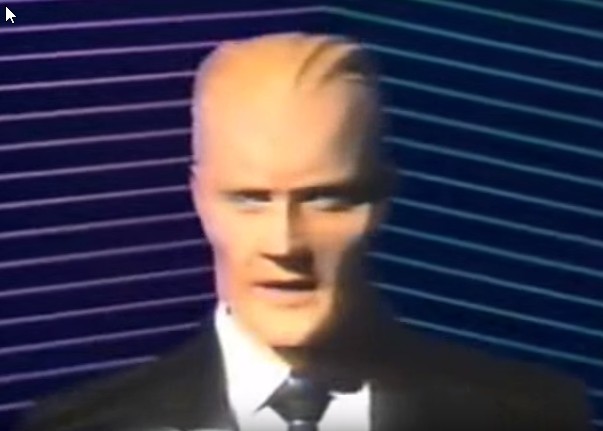Fantastic Digital Brain. Uploading Your Brain To The Cloud
What’s It Like To Live Purely Digital?
Near future. Sam Sunborn interviews Frank Einstein, Founder and Chief Scientist at Digital3000. Dr. Einstein has invented a brain-to-computer interface that enables the uploading of human, thoughts, memories and emotions to computer servers in the Cloud. Once uploaded, the individual can live digitally, still interact with their loved ones, surf the web, read, write, research, work and enjoy all the “pleasures of the mind.” The Digital Brain. By happenstance, Dr. Einstein was the first personality to be uploaded to the Cloud and subsequently die, leaving him to live only in digital form. So, he is available only in digital form, via Skype, for our interview.
Sam: Dr, Einstein, thanks for taking the time to talk with me and our readers today. Let’s get started. Tell me about why and how you created your digital mind.
Dr. E: Thanks for having me. I have always been fascinated by the possibilities of a brain-to-computer connection. I suppose it’s because I grew up reading sci fi and I became both an M.D. and a neuroscientist. Any scientist worth his or her salt, constantly asks the question, “What if . . . ?” or “What could be?”
The Digital Brain
Sam: So how did that translate into your current work and accomplishments?
Dr. E: I had been working both as a professor at BU and under a DARPA grant to study the possibilities of merging mind and computer, in some basic form. At first it started as a simple data problem. The mind stores data in the form of facts and memories. The first problem was how to move brain data into digital form.
Sam: Were you successful and where did that lead?
Dr. E: Well, unfortunately as we were making real progress, my wife died in a tragic automobile accident. I lost about six months. More importantly, I lost the desire and passion to go on. You need a real fire in the belly to succeed at this kind of research. Susan was the love of my life and my raison d’etre. I couldn’t stop grieving. I still had my daughter, Sarah. Otherwise, I may have just ended it all right then and there.
The Crazy Entrepreneur
Sam: What changed that got you back on track?
Dr. E: Right about that time, I met this crazy entrepreneur. He had done some Internet work on a site called InTheEventOfMyDeath.info where members can scrapbook their lives, save last wishes, etc. This crazy guy asked a big What If question, “What if we could actually upload people’s personalities, memories and emotions so they could live on digitally forever?” When he heard a little bit about my work, a mutual friend, Bart, put us together over coffee. I was alive physically then and really loved the aroma and taste of good coffee. Anyway, we hit it off and decided to pursue this utterly fantastic mission of the digital brain together.
Sam: But wait. You were working under a DARPA grant. So I have two questions. First, why was the military interested enough to fund your work? Second, weren’t you bound to keep it secret and confidential?
Dr. E: Good questions. First, the scope of my work, initially with DARPA, was limited to the brain-to-computer data transfer problem. Little did I know at the time, and this is now public knowledge so I can speak about it, that the military really wanted to develop Cyber Warriors. They wanted digital soldiers who could carry out far deadlier attacks, by being inside the system, than any talented hacker could perform from the outside.
Second, my entrepreneur partner and I realized that the real power of this idea was more than just data transfer. If we could upload memories and emotions, in short an entire personality, people might be able to live online digitally forever. Digital Immortality, a real Digital Brain. We shared a vision to do something good for people, not to create new weapons. With some very good lawyers, I was able to extricate myself from DARPA. With my new partner, we started Digital3000, a company devoted to providing digital immortality for the greater good. Could you imagine someday, watching your great, great granddaughter’s soccer game? Reading them bedtime stories? Carrying on your research work forever? What if Jonas Salk, Albert Einstein and Thomas Edison, not to mention Charlie Chaplin, could have lived on forever digitally? Can you imagine what the world would be like now?
Tragedy Strikes
Sam: Simply amazing, I’m sure. But then something tragic happened to you. Can you share that with us?
Dr. E: Yes, can you smell wires burning? We formed the company, advanced the research and had already uploaded a few personalities, including mine. I was working on solving one of the many surprising problems that arose, namely real people freaking out when they met their digital replicas. At that moment, an assassin burst into our lab, shot up the place and murdered me, at least my physical self, in the process.
Sam: Wow, that must have been horrendous.
Dr. E: It was, as you know. The next thing I knew, I woke up in the Cloud as a digital form of myself. My partner and Bart had brought me back, so to speak. We were under attack. So we had to shift our focus to tracking down, what turned out to be, malicious terrorists bent on both ours and the country’s destruction. But most of this was in the news, as you well know.
Sam: So you were real heros. As the news reported, you were instrumental in tracking down and stopping the attacks and the attackers.
Dr. E: We may have been heros, but at great cost. And, this wasn’t in the news, I don’t believe the threat is over. I don’t believe we caught all the attackers and I wouldn’t doubt that they are regrouping and working on some other nefarious plan. We are continuing our research, but wouldn’t be surprised to find ourselves in the middle of another crisis soon.
Sam: Well that’s sobering for sure. You said you are continuing your research. What are you working on?
Dr. E: Well, for personal reasons and bigger reasons, we are researching how to bring a digital person back to a physical form. This is way more complex than just uploading to the Cloud. It requires translating digital into biological. I think this may be a long, hard, maybe even impossible task. But then again, I’ve theoretically got forever to figure it out. There’s also a host of ethical problems around this, like does it require taking over someone else’s body? Is there a class of healthy candidates willing to participate? There’s many more issues like this that we could discuss another time.
Sam: Are you working on anything less daunting?
The Brain-To-Computer Link
Dr. E: We are in a race with Elon Musk’s company, Neuralink, and others to make a living brain-computer connection. This is maybe a more urgent necessity as AI, artificial intelligence, surpasses human capabilities. There are many warning of the dangers of unfettered AI. If we can successfully connect the brain to computers, we can in effect, create a super-being and perhaps, have the best and possibly the worst, of both worlds.
Sam: Perhaps we can talk again about your super-beings. Is it a new step on the evolutionary scale or is it science gone mad? I’m not sure. To be continued. So, one last question. You mentioned your crazy partner who co-founded Digital3000 with you, but you didn’t mention his name.
Dr. E: Why, it’s you, Sam Sunborn, of course.
You can read more about Sam Sunborn, Dr. Einstein and Digital Immortality in the thriller novel, NOT SO DEAD. Until next time . . .
Note: unlike the other other posts on CharlesLevin.com which are based on current technology, the above interview is based on technology we anticipate in the near future. This interview or one like it, is what we envision sometime soon.
P.S. My new techno-thriller, NOT SO DEAD, is now available on Amazon. Read more about it and sign up for our mailing list Better yet, buy a copy?



The subject of uploading brains and minds into the cloud might sound like it’s impossible, and only the domain of science fiction. But I’d wager we’re pretty close to making it scientific fact. Interesting to see the conversation coming alive Online. Where else would be better?